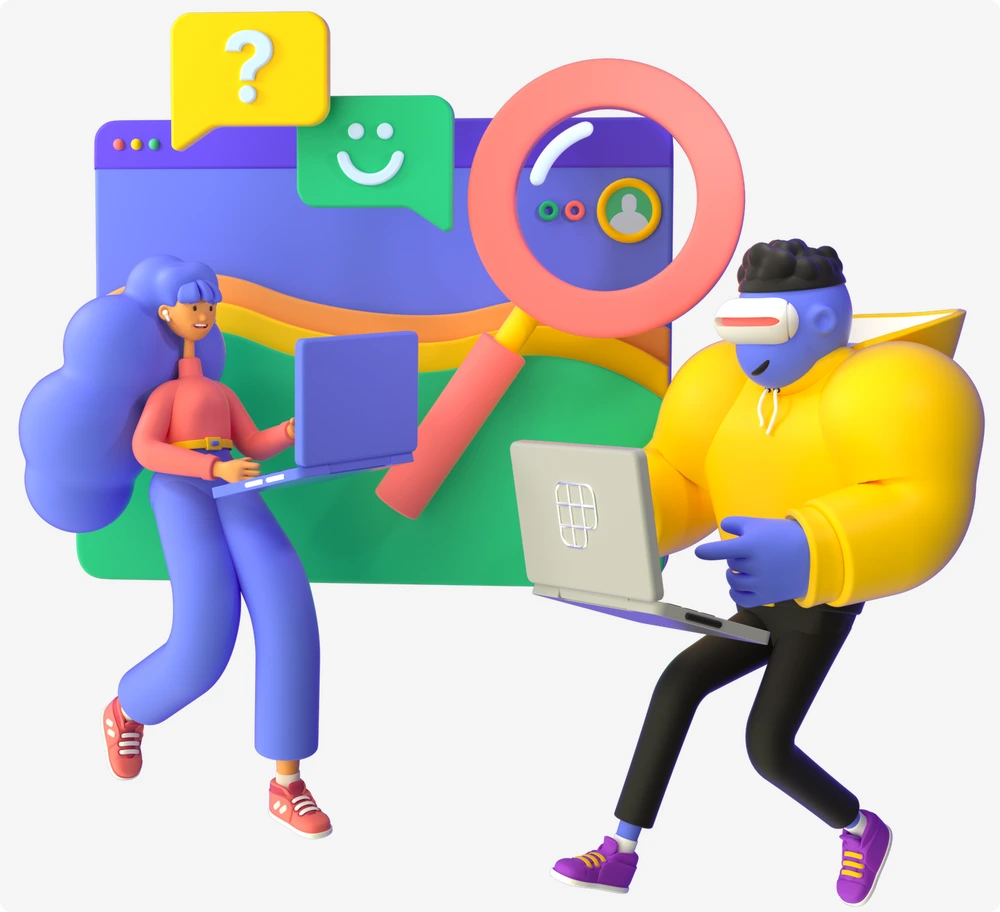2020 marked an unexpected world event that forced humanity to take a pause – from work and from life. Suddenly everything started to change at an unprecedented rate, including how we communicate with each other.
There was no longer an obvious divide between the hours we put in at work and the hours we put in for ourselves and our loved ones, making virtual communication a constant need. However, this new way of life also gave rise to a very important question- How do we communicate effectively, while maintaining our sanity and protecting our focus?
To find an answer to this question, it is important for team managers and people leaders to first understand the meaning of synchronous and asynchronous communication and how companies can create a balance between the two and pave the way for efficient collaboration.

Definition of Synchronous Communication
Let’s start with a concept that most of us are familiar with – synchronous communication.
Synchronous communication refers to the everyday conversations, meetings and collaborations that happen in real-time. Workplaces that depend on this mode of communication usually have pre-defined work timings and an understanding that employees are readily available for communication during that time.
Think of an average day in a pre-pandemic workspace- you head to the office at 9:00 AM, attend a couple of scheduled meetings and have a few more “quick calls” to discuss any ad-hoc concerns. During the day, your teammates approach you at your desk or send an instant message and await your reply. The common thread between all these modes of communication is the expectation of an immediate response.
Pros and Cons of Synchronous Communication
Advantages of using Synchronous Communication:
Real-time resolutions: Synchronous communication is great for brainstorming activities or problem-solving sessions. Here, the participants don’t have to wait around for too long and can take decisions for urgent matters.
More meaningful interactions: Real-time communication promotes team building and forges interpersonal relationships between the stakeholders involved. It is a more personal way of connecting with your teammates.
Minimizes miscommunications: Meetings and calls allow participants to convey their tone and context and reduce the chances of miscommunication. Doubts & clarifications can also be discussed as and when they arise.
Disadvantages of using Synchronous Communication:
Can be unproductive: Without a pre-set agenda in place, meetings can lose track of the objective or even tend to drag on with multiple people haphazardly expressing their views and needs. Data suggests that most employees attend 62 meetings every month, half of which are considered as pointless.
Requires constant monitoring: The organizer needs to keep track of the agenda and ensure that the participants do not sway away from the topic at hand. This could result in a lot of time being wasted on unnecessary conversation.
Manual documentation: Real-time communication means that everything said during the meeting or call needs to be properly documented and easily accessible. Although there is still a risk that some information might be left out.
Workflow disruptions: Without the flexibility of time, synchronous communication methods can disrupt the workflow, taking away much-needed focus-time from employees.

Can lead to burnout: Employees might feel pressured to be constantly available to their colleagues, leaving them distracted and feeling burnt out.
Definition of Asynchronous Communication
Asynchronous communication happens when collaboration can take place irrespective of shared space and time. While this concept isn’t a new one, it has certainly garnered more popularity post the pandemic.
With asynchronous communication, people can exchange information without interrupting each other’s workflows. This allows people to feel more agency over their time and reduces the chances of burnout. Emails, text messages, project management tools and voice-notes are all examples of asynchronous communication.
Pros and Cons of Asynchronous Communication
Advantages of using Asynchronous Communication:
Suitable for remote teams: Asynchronous communication is better for teams which depend on virtual communication. The constant need to be online is minimized and employees can focus more on prioritising their tasks.
In-built documentation: Most tools offer easy documentation of everything that is being discussed which can then be shared with the team for transparency.
Increase in overall productivity: There is a noticeable increase in productivity and accountability among employees due to efficient documentation and the minimisation of distractions and disruptions.
More accessible: The team is not limited by time or space, creating a more inclusive and healthy work culture. People can collaborate whenever they want, not just on Tuesdays at 9am Eastern time.
Reduces risk of burnout: Minimises meeting fatigue especially for introverts and neurodivergent individuals.
Not time-zone dependent: Great for global teams where talent can be acquired from any corner of the world without the worry of travel or time.
Disadvantages of using Asynchronous Communication:
Unsuitable for urgent requests: Employees are not required to be available on an immediate basis.
Requires training: Async is an art that companies need to embrace and a skill that employees and managers need to learn.
Does not promote camaraderie: It’s difficult to build personal bonds and can result in monotony among employees. However, people have started coming up with innovative ways to tackle this. Sharing memes & GIFs are few such ways.
Examples of Synchronous and Asynchronous Communication
The use of fancy words can make synchronous and asynchronous communication seem innovative and new but you’d be surprised to know that it has existed within human spaces since time immemorial. Whether it was discussions regarding which animals are the easiest to hunt (synchronous) or kings sending royal messengers to distant lands with a note (asynchronous), communication has always been important to our continued survival.
A few (more modern) ways of synchronous communication involve:
Meetings (online and in-person)
Impromptu chats at the office
Phone calls
Instant messaging
Live Webinars
Lectures
Watercooler conversations
While examples of asynchronous conversations can look like this:
Voice notes
Recorded messages
Emails
Video logs
Project management tools
Letters
When to use Synchronous vs. Asynchronous Communication
Even as most of the world has started to accept that remote work is the future, companies struggle to find a healthy balance between synchronous and asynchronous communication. While adopting an asynchronous model can open opportunities to build a happier workforce, reduce overhead costs and hire the best resources from across the world, it isn’t suggested that you completely ditch real-time communication either.
The idea is to understand where synchronous communication is a necessity:
Weekly meetings or brainstorming sessions to help your team collaborate and interact more efficiently.
Building a sense of community & bonding with your team members
However, real-time communication shouldn’t be the default way of communicating for every type of concern. While it can be a struggle to move out of old habits and adapt to the new world, creating a balance between synchronous and asynchronous communication is of utmost importance. So, the next time you are planning to send a calendar invite to your colleague, think: could this meeting be done asynchronously?
Some tips for making Asynchronous Communication work for you
Despite the challenges involved in asynchronous communication, if used efficiently and planned right, it can have more boons than banes.
As a people leader, you can:
Reduce pressure: Learn how to use synchronous and asynchronous modes of communication effectively and let your team know that they don’t always have to be available.
Make boundaries: Create boundaries, set rules and train employees in communication etiquette, so that everyone is on the same page about expectations when it comes to communication.
Define priorities: Define what an emergency is and set boundaries about reaching out to teammates on a more urgent basis.
Pre-plan meetings: Schedule remote check-ins in a way that your team stays in sync without disrupting their workflow and causing unnecessary distractions.
Use project management tools: Assign tasks using a project management tool rather than having calls or meetings.
Encourage work-life balance: Build trust and accountability in your work culture.
Be flexible: Encourage routines in employees, but don’t force them into rigid structures that revolve around old habits or stringent work hours.
Invest in the right communication tools: Use software that is specially designed to create a balance between synchronous and aysnchronous communication within your team. Noicely’s hybrid messaging solution optimises for all your communication needs and lets you and your team have more control over your time.
As an individual member of a team, you can:
Document: Ensure that every piece of communication is properly documented and is easily available and accessible to your team
Set goals: Set clear deadlines for all tasks discussed on any platform and ensure this information is communicated to all stakeholders.
Conclusion
It’s time for companies and individuals to embrace asynchronous communication and create an intentional balance between sync and async ways of communication. This will not only help in increasing overall productivity but also create a happier workforce.


